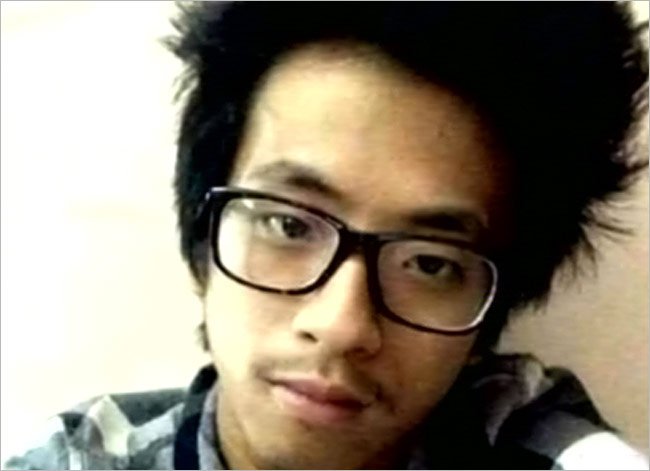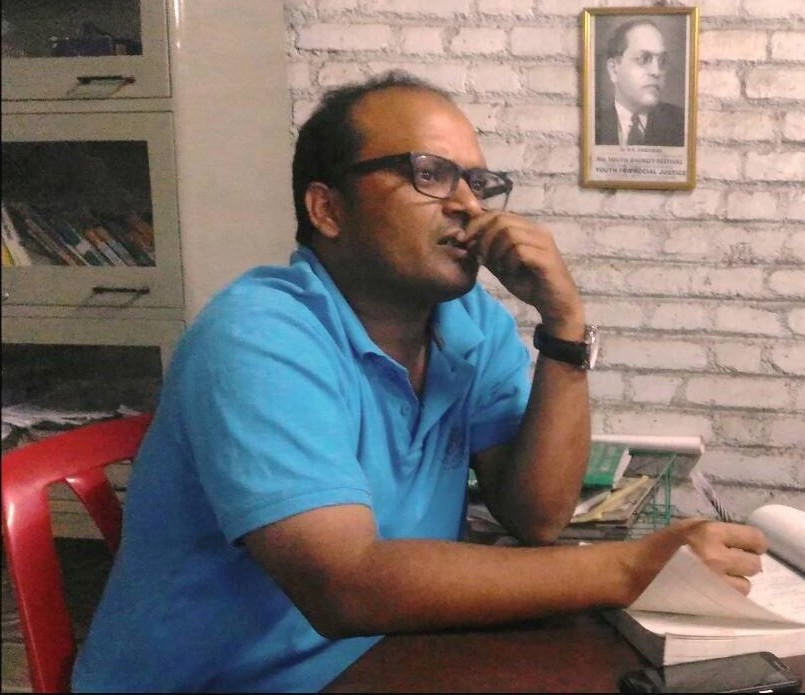Shailaja Menon and N Sukumar
“It takes years of “political, social, economic and human degradation to create a terrorist”. So “fighting terror can only succeed by rehumanising degraded societies, by undoing, one by one, the many individual acts of repression, obstruction, denial, marginalisation and autocracy.”
~ Rami Khouri, Jordan.
Many eons ago, the Films Division used to screen a documentary before the regular feature film commenced. A beaming Prime Minister (either Jawaharlal Nehru or Indira Gandhi) would be featured dancing with the tribals, many a time clad in the tribal attire. The visual vocabulary reflected a pluralistic, multi-cultural and secular Republic. Off late, the republic has been besieged by enemies, ideological in nature. The communities marginalized by the mainstream discourse find the lofty ideals of the Republic to be exclusive, degrading and de-humanizing.

The cold blooded murder of the young student, Nido Taniam, from Arunachal Pradesh in the nation’s capital stands testimony to the cultural fault lines of our society. He was targeted ostensibly as his hairstyle looked ‘different’. In the process, an innocent act of going to the market resulted in his death. One wonders, if the same hairdo was sported by the ‘white-skinned’, ‘Aryan male’, it would have been appreciated as a style statement.
The founding fathers of our Republic envisioned a society whereby every citizen would break free from the shackles of caste, creed, gender, class, regional, linguistic and ethnic hurdles. One only needs to peep into the thoughts of visionaries like Phule, Ambedkar, Tagore, Periyar, Gandhi and Nehru to realize the revolutionary foundation of the ideas which shape our Republic. Jotiba Phule dedicated his ‘Gulamgiri’ in 1873 to the suffering ‘Black’ slaves in America. Similarly, Savitribai Phule, Pandita Ramabai, Tarabai Shinde provided an alternate discourse on women’s emancipation. However, these are the luminaries which ‘Indian history’ has recognized. Are the peripheral communities’ peoples without histories? Surely, a student from the North East would wonder why his/her culture, tradition, history, myths and legends are never reflected in the pedagogy of the academia.
How does one decode and deconstruct the incarceration and physical elimination of individuals who ‘look’, ‘think’, ‘eat’, ‘dress’, ‘love’ differently? The spatial and mental ghettos dot our metros. We never find anything wrong if a housing society lays down rules about one’s culinary preferences? Our identities accompany us even in the land of the departed. For the dead in the desert town of Jaisalmer, their caste tag lives on. A government agency for urban affairs in the western Rajasthan district has sanctioned separate and clearly marked cremation grounds for different castes and communities1. We live amidst prejudices where being a ‘vegetarian’ symbolizes a ‘satvik’ nature. Most of us have resorted to subterfuge regarding our dietary fondness else it is difficult to get a roof over our heads or even domestic help. Hence, communities are stigmatized because they and their food ‘stinks’. No wonder that the public sphere is increasingly being sanitized. You have canteens in academic institutions which marketize their food with a vegetarian tag. In many areas adjacent to Delhi University, (to illustrate- Vijay Nagar) exclude the taste of a community, by selling only kosher food. The bakeries proudly proclaim that ‘we do not use eggs’. The message is loud and clear- ‘that this space is reserved for the pure’. The hypocrisy of Indian mainstream society is hilarious. As commented by Partha Chatterjee, the binary of the ‘home’ and ‘outside’ is evident whereby the home needs to be sheltered from devious influences. Hence, the average Indian male can eat, drink and make merry outside the home, thus protecting the sacred space. (Many Indian homes do not cook non-vegetarian food in their kitchens but eat such food outside the home).
The schizophrenic nature of our society comes to the forefront when China offered stapled visas to people from Arunachal Pradesh2. One witnessed a flurry of activities with diplomatic negotiations to settle the dispute. However, when a young ‘Indian’ citizen loses his life in a brutal assault because of racial profiling, there is a thundering silence. In 2012, rumors triggered a mass exodus of people from the North East in many cities across India, particularly in Bangalore. The state arranged special trains for the people instead of assuaging their fears. This reflects the differential treatment meted out to the citizens. Obviously, some are more equal than others. In the case of Nido Taniam, the police never booked the attackers but left Nido at the same spot where the scuffle occurred, thereby facilitating his death. As Nido did not ‘look like us’, he is dispensable.
For an ‘average’ Indian, the North East is an exotic3 cultural and physical territory. However, it is always in the news for the wrong reasons. The moral police target the North East students in the name of drugs, dress codes and sexual morals. Sixty percent of women, who have migrated from northeast India to the four metros — Delhi, Mumbai, Kolkata and Bangalore – have reported harassment and unfair discrimination on a daily basis, says a recent survey. While 23% of respondents said they have been harassed by landlords, 42% said they faced verbal abuse. A total of 26% reported heckling and molestation. Alarmingly, there seems to be little trust in police as 80% of those who were harassed did not approach them. But those who did didn’t have a good experience. The survey was part of a study conducted by Centre for North East Studies and Policy Research, Jamia Millia Islamia, and commissioned by National Commission for Women. It began in May 2012.4
The above-mentioned study reflects the gross violation of the constitutionally guaranteed fundamental rights of citizens belonging to the North East India. This region has witnessed the barbaric nature of the state where extraordinary laws have curtailed the rights of the citizens. The mainland has never questioned the necessity of such surveillance. Does anyone including the cheerleaders at India Gate and Jantar Mantar spare a thought for Irom Charu Sharmila who has been on a fast for over a decade protesting against the draconian laws? The state has ensured its survival by forcibly keeping her alive. This legitimizes the discriminatory attitude of the ‘uncivil mainstream Indian society’.
‘We Stripped And Shouted, ‘Indian Army, Rape Me!’ It Was the Right Thing to Do’
In a quiet, sleepy village, a beaming, portly woman stands in the doorway with four kids and a small grandson. Looking at her without any background information, it would be hard to imagine this gentle, happy, beatific face as the face of Manipur’s most aggressive anti-State protests. But at the age of 62, Ima Ngambi is a Manipur legend, the woman who shouted the loudest in 2004 before stripping naked to protest the rape of 32-year-old Thangjam Manorama. Her story is important not only because she has stood up to a deeply oppressive and patriarchal politics. She did all of this while living on wages of Rs 40 a day, with which she fed a family of six, singlehandedly brought up four children and managed to save the odd rupee to put into her fight against the State.5
After Nido’s death, the television debates reproduced the usual platitudes, “We are all Indians”. Why the unease in admitting the subterranean racism prevalent amongst us? In order to prevent such unfortunate incidents in the future, we should critically engage with our hegemonized and parochial self, to rehumanize the public sphere.
“A society that tolerates the murder of innocents, or incitement to murder, as the interpretation of due and legitimate response, is a society that is breaking apart beyond all remedy”.6
~
Notes
[1]. Vimal Bhatia, “Jaisalmer Plans to Set up Crematoriums by Caste”, http://articles.timesofindia.indiatimes.com/2013-09-12/india/42007592_1_uit-caste-identity-crematoriums Sep 12, 2013, 01.24 am.
[2]. http://www.thehindu.com/news/national/india-has-to-live-with-chinas-stapled-visas/article5273292.ece, Accessed on 31st January, 2014, 11.30 pm.
[3]. The advertorial of Incredible India features the dance performances of the North East states.
[4]. http://articles.timesofindia.indiatimes.com/2014-01-24/delhi/46561413_1_migrant-women-northeast-women-ncw, Accessed on 1st February, 2014, 12.20 am.
[5]. Published in Tehelka Magazine, Volume 10 Issue 8, Dated 23 February 2013, www.tehelka.com, Accessed on 28/08/2013, 11.10 pm.
[6]. Nobel Laureate Wole Soyinka, The Times of India, December 2, 2002, http://mailman.lbo- talk.org/2002/2002-December/028021.html, Accessed on 1st February, 2014, 12.50 am.
~~~
Shailaja Menon teaches History at the School of Liberal Studies, Ambedkar University, Delhi.
N Sukumar teaches Political Science at Delhi University.
[Picture courtesy: the net]









